
Traditional Egyptian bread is flat bread, the most well-known of which is pita. Egyptian bread is yeast-raised flat bread. and neither flat bread nor pita are exclusive to Egypt, as they can be found throughout the Middle East. Soft yet chewy, Egyptian bread often has toppings placed on top of it, or, as in the case of pita, inside the bread. To make the bread in the traditional manner, you need a very hot oven, ideally a clay oven, a rolling pin and a curved metal baking sheet.
Yeast or Starter

Traditional Egyptian bread is made with starter as the leavening, rather than commercial yeast. However, in modern Egyptian society, commercial yeast is commonly used. Also called a sourdough starter -- because of the sourness that results from the wild yeast’s fermentation -- you can make yours at home over the course of several days and store it in the refrigerator for future use. To make a starter, mix together flour and water and cover it with cheesecloth, and let it sit in a warm place. After one or two days, when bubbles appear, the starter is ready to be used or stored in a sealed container in your fridge.
Making, Kneading and Rolling the Dough

The dough for Egyptian bread, like many Middle Eastern breads, is rolled thin, which allows you to cook the bread very quickly at extremely high temperatures. The dough is kneaded gently to encourage elasticity but not density. Even though it's a flat bread, the dough for Egyptian bread is still left to rise, but often for no more than an hour. Divide the dough into smaller portions, and roll it flat using a rolling pin or a long smooth, wooden rod. Shamsi bread is commonly folded into quarters after baking, so it is quite large, almost 2 feet wide. Pitas can be rolled much smaller; a 6-inch diameter bread is perfect for individual servings. Oil or ghee, clarified butter, is spread onto some breads, either before baking or immediately after.
Baking It

A traditional wood-fired clay oven, such as a pizza oven, is used to bake Egyptian bread. The Egyptian baking method involves placing the rolled dough on a heated clay or metal surface. To make pitas, place the rolled rounds of dough on a piece of hot metal inside your oven. Traditionally, the metal is convex shaped, although you can also use flat surfaces, such as a baking tray. The heat from the metal encourages the pitas to puff up quickly as they bake, creating the opening inside the bread. To make crispy cracker-like bread to use with dips, brush the flat breads with oil. Sprinkle the oiled surface lightly with fresh herbs or dried spices. Re-bake the bread until it crisps up and browns. Break the bread into smaller pieces with your hands. Season with sesame seeds and cumin seeds.
Serving It

Egyptian breads are eaten fresh, often the day that they are made, and are generally not stored for more than a few days. To keep the bread soft and pliable, keep it warm after baking, wrapped in a clean cloth. Serve it in a basket. You can use Egyptian bread as a sandwich bread, filling it with everything from deli meats to more traditional grilled meats and falafels. It can also be used -- either soft or baked into crackers -- for dips, such as hummus.
Related Articles
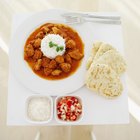
What Is Indian Flat Bread Called?
How to Keep Crusty Italian Bread Soft
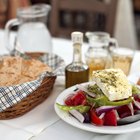
List of Greek Breads
Does French Bread Stale Quickly Because ...
Quick and Easy French Bread Recipe
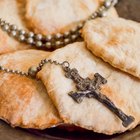
How to Make Communion Bread Wafers

How to Store Fresh Baked Bread
What Is Rusk Bread?

How to Freeze Brioche
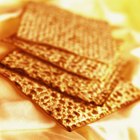
What Are Some Examples of Unleavened ...
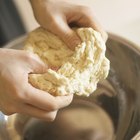
How to Bake Bread in a Pyrex Glass Tube
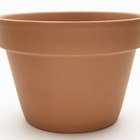
How to Bake Bread in a Clay Pot
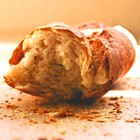
Differences Between French & Italian ...
How to Make Bread That Does Not Crumble ...

What Happens if You Leave Bread Dough ...
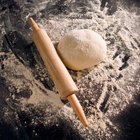
How to Preserve Dough That Has Risen

Does Bread Expire?

How to Make Bread Rise Indoors

Quick Method for Thawing Frozen Bread ...
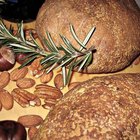
What Is Artisan Bread?
References
- Abigail's Bakery: Where Pita Bread Comes From
- The New York Times: First Time's the Charm With Pita
- New York Times: Homemade Pita Bread
- World Breads: From Pain de Campagne to Paratha; Paul Gaylar
Writer Bio
Rachel has worked professionally as a chef and writer on food since 2010. In addition to a Bachelor of Arts degree, she holds a diploma in classic culinary arts from the French Culinary Institute. She has an active interest in wine, fine dining and sustainable agriculture.
Photo Credits
Sarah Vantassel/Demand Media